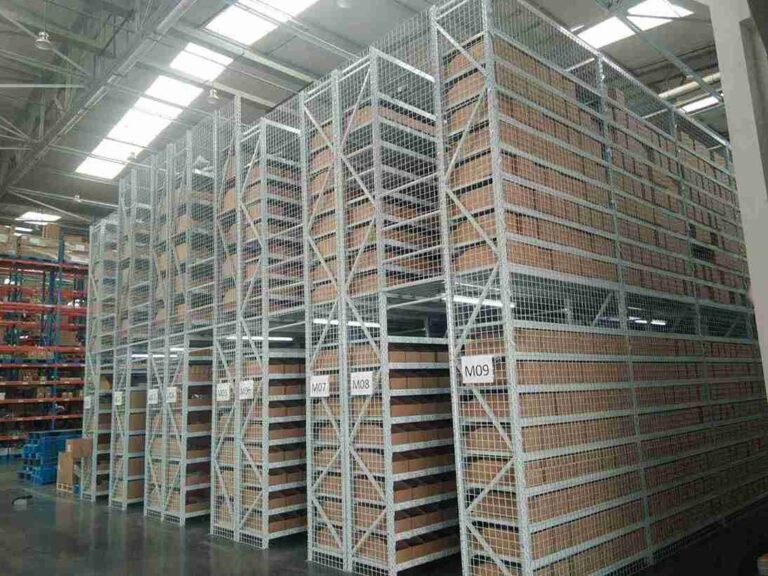📐 "First 50 Enterprise Queries Get Custom 3D Warehouse Design" Plan

Introduction: Why OSHA Narrow Aisle Racking Standards Are Critical for Modern Warehouses
In today’s high-density storage environments, OSHA narrow aisle racking standards play a pivotal role in ensuring worker safety while maximizing storage efficiency. Warehouses utilizing narrow aisle configurations face unique hazards, including forklift collisions, rack collapses, and falling loads—all of which can lead to severe injuries, costly OSHA violations, and operational downtime.
This comprehensive guide dives deep into every aspect of OSHA narrow aisle racking standards, providing warehouse managers, safety officers, and logistics professionals with actionable insights to maintain compliance, reduce risks, and optimize storage operations.

H1: Understanding OSHA Narrow Aisle Racking Standards and Their Importance
The OSHA narrow aisle racking standards are designed to mitigate risks associated with high-density storage systems. Unlike traditional wide-aisle setups, narrow aisle racking requires stricter safety protocols due to:
- Tighter maneuvering spaces, increasing collision risks
- Higher vertical storage, raising potential for load instability
- Specialized equipment requirements, such as narrow aisle forklifts
Failure to comply with OSHA narrow aisle racking standards can result in:
✔ Hefty fines (up to $15,000 per violation)
✔ Increased workplace injuries
✔ Legal liabilities from non-compliance lawsuits
By adhering to these regulations, warehouses can enhance safety, avoid penalties, and improve operational efficiency.
H2: OSHA’s Key Requirements for Narrow Aisle Racking Systems
H3: Minimum Aisle Width and Clearance Standards
While OSHA does not specify exact measurements, OSHA narrow aisle racking standards require aisles to be sufficiently wide for safe equipment operation. Industry best practices recommend:
- Standard narrow aisles (5-6 feet) for standard forklifts
- Very narrow aisles (VNA) (8-10 feet) for specialized turret trucks
- Clear floor markings (per OSHA 1910.176(a)) to designate pedestrian walkways and hazard zones
H3: Load Capacity and Structural Integrity Compliance
Under OSHA narrow aisle racking standards, every rack must display its maximum load capacity. Exceeding this limit violates OSHA 1910.176(b) and risks catastrophic failure. Key requirements include:
- Annual inspections by a qualified engineer
- Immediate repairs for damaged beams or uprights
- Prohibiting modifications without manufacturer approval
H2: Employee Training Under OSHA Narrow Aisle Racking Standards
H3: Mandatory Forklift Operator Certification (OSHA 1910.178)
Narrow aisle forklift operation demands specialized training, including:
- Classroom instruction on OSHA narrow aisle racking standards
- Hands-on practice in confined spaces
- Performance evaluations before independent operation
H3: Safe Loading and Unloading Procedures
Workers must follow OSHA narrow aisle racking standards when handling inventory:
- Even weight distribution across beams
- No climbing on racks—use approved order pickers
- Fall protection for elevated work
H2: Maintenance and Inspection Protocols for OSHA Compliance
H3: Routine Inspection Checklist
To meet OSHA narrow aisle racking standards, warehouses should implement:
- Daily visual checks for damage
- Monthly load audits
- Annual professional inspections
H3: When to Repair vs. Replace Racking
Minor damage may be repairable, but OSHA narrow aisle racking standards mandate replacement if:
- Uprights are bent beyond manufacturer tolerances
- Beams exhibit cracks or severe deformation
H2: Common OSHA Violations in Narrow Aisle Racking (And How to Avoid Them)
H3: Top 5 OSHA Narrow Aisle Racking Violations
- Overloading racks beyond rated capacity
- Missing safety guards on rack ends
- Untrained forklift operators
- Lack of aisle markings
- Skipping annual inspections
H3: Proactive Compliance Strategies
- Digital load monitoring systems
- Monthly safety training refreshers
- Third-party OSHA compliance audits
H2: Advanced Safety Technologies for OSHA Narrow Aisle Racking Compliance
H3: Wire Guidance and RFID Systems
Ensures precise forklift navigation in very narrow aisles (VNA).
H3: Collision Avoidance Sensors
Alerts operators before impact with racks or workers.
H3: Automated Storage and Retrieval Systems (AS/RS)
Reduces human error in high-density environments.
Conclusion: Achieving Full Compliance with OSHA Narrow Aisle Racking Standards
Implementing OSHA narrow aisle racking standards is not optional—it’s a legal and ethical obligation for warehouse operators. By following these guidelines:
✅ Conduct regular inspections
✅ Train employees thoroughly
✅ Invest in safety technologies
Businesses can prevent accidents, avoid fines, and optimize storage efficiency. For further guidance, consult OSHA’s official documentation or partner with a rack safety specialist.
FAQs on OSHA Narrow Aisle Racking Standards
1. What’s the #1 mistake warehouses make with OSHA narrow aisle racking standards?
Overloading racks beyond capacity—a leading cause of collapses.
2. How often must forklift operators be retrained under OSHA?
Every 3 years, or after an incident.
3. Do OSHA narrow aisle racking standards apply to mezzanines?
Yes, all elevated storage must comply.
4. Can paint color affect OSHA compliance?
Yes—high-visibility markings are required for hazard zones.
5. Where can I get official OSHA narrow aisle racking standards documentation?
Download the OSHA 1910.176 regulation at www.osha.gov.
By mastering OSHA narrow aisle racking standards, warehouses can operate safely, legally, and at peak efficiency.




